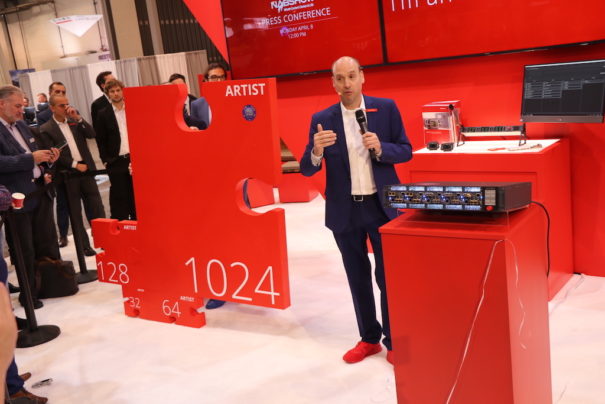Riedel presenta Artist 1024: una pieza clave que redefine la intercomunicación IP
Siguiendo el diseño de su stand en NAB 2019 en Las Vegas, el fabricante ha presentado la siguiente e importantísima pieza del rompecabezas del ecosistema de intercomunicadores Artist, which has 1.024 puertos sin bloqueo en sólo 2 RU.
Precisamente fue hace diez años en el certamen NAB en Las Vegas cuando Riedel Communications presentó MediorNet, que se convertiría en uno de los buques insignia del fabricante y fue la primera plataforma de redes de media y transporte de señales distribuida y basada en tecnologías IT.
Al cambiar radicalmente la forma en la que los radiodifusores mueven sus señales, MediorNet introdujo una nueva tecnología para la transmisión de datos, y actualmente son más de 5.000 frames instalados en todo el mundo.
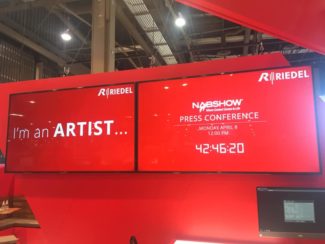 Una década después y también en NAB, Riedel ha ido más allá con el desarrollo de Artist 1024, una matriz de intercom con la que pretende redefinir la conectividad de las comunicaciones con una mayor densidad de puertos y compatibilidad con IP nativa, y que sus responsables han calificado como “la siguiente pieza del rompecabezas”, con las características y capacidades solicitadas por los clientes.
Una década después y también en NAB, Riedel ha ido más allá con el desarrollo de Artist 1024, una matriz de intercom con la que pretende redefinir la conectividad de las comunicaciones con una mayor densidad de puertos y compatibilidad con IP nativa, y que sus responsables han calificado como “la siguiente pieza del rompecabezas”, con las características y capacidades solicitadas por los clientes.
Thomas Riedel, CEO de Riedel, ha destacado que “la compatibilidad de los sistemas y la sostenibilidad de las inversiones de los clientes son de suma importancia para nosotros. El nodo Artist-1024 se adaptará a los nuevos clientes que buscan un sistema completo y preparado para el futuro, así como para aquellos que nos han apoyado durante años y que ahora están preparados para dar el paso a las infraestructuras IP”.
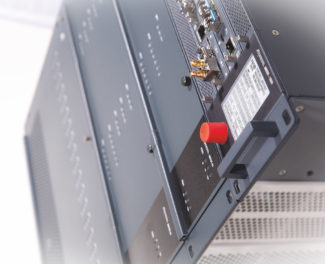 Cumpliendo la norma SMPTE 2110-30/31 (AES67), Artist-1024 es el siguiente paso evolutivo en el desarrollo del ecosistema de intercomunicación Artist. Este nodo dispone de 1024 puertos sin bloqueo en sólo 2 RU, lo que reduce los requisitos de espacio de rack, además de introducir una serie de innovaciones técnicas centradas en las Tarjetas de Interfaz Universal (UIC) definidas por software.
Cumpliendo la norma SMPTE 2110-30/31 (AES67), Artist-1024 es el siguiente paso evolutivo en el desarrollo del ecosistema de intercomunicación Artist. Este nodo dispone de 1024 puertos sin bloqueo en sólo 2 RU, lo que reduce los requisitos de espacio de rack, además de introducir una serie de innovaciones técnicas centradas en las Tarjetas de Interfaz Universal (UIC) definidas por software.
Specifically, este nuevo tipo de tarjeta de interfaz combina la conexión en red, la mezcla y la gestión, además de que puede configurarse para que actúe como una tarjeta de abonado AES67 o MADI, o como una tarjeta de fibra/enrutadora/procesadora. Cambiar el tipo de conectividad es tan fácil como reconfigurar la UIC con un simple clic en el software de configuración de Director.
 La trama proporciona diez posiciones para los UIC, dos de las cuales están reservadas exclusivamente para su encaminamiento y la conexión en red. Las ocho bahías restantes pueden equiparse con UIC de diversas configuraciones para proporcionar conectividad a los abonados.
La trama proporciona diez posiciones para los UIC, dos de las cuales están reservadas exclusivamente para su encaminamiento y la conexión en red. Las ocho bahías restantes pueden equiparse con UIC de diversas configuraciones para proporcionar conectividad a los abonados.
El mezclador integrado en cada tarjeta puede escalarse de 8 a 128 puertos por tarjeta y acceder a los 1.024 puertos de la red troncal de Artist. Besides, tiene cuatro ranuras de expansión disponibles para varias aplicaciones GPIO o de sincronización.
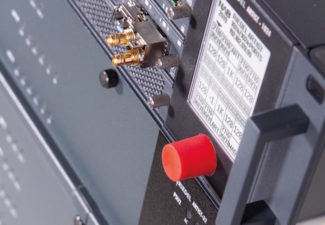 Riedel Artist-1024 también introduce un nuevo sistema de licencias flexible y fácil de usar, que se centraa nivel de framce en lugar de tipo conectividad. Cada nodo comienza con una licencia de Virtual Artist Matrix (VAM), que incluye un número definido de puertos (16 a 1.024) que pueden distribuirse libremente a través de las tarjetas de suscripción del nodo. A ello se suman licencias flexibles para una rápida reconfiguración del sistema, simplemente moviendo capacidades entre nodos.
Riedel Artist-1024 también introduce un nuevo sistema de licencias flexible y fácil de usar, que se centraa nivel de framce en lugar de tipo conectividad. Cada nodo comienza con una licencia de Virtual Artist Matrix (VAM), que incluye un número definido de puertos (16 a 1.024) que pueden distribuirse libremente a través de las tarjetas de suscripción del nodo. A ello se suman licencias flexibles para una rápida reconfiguración del sistema, simplemente moviendo capacidades entre nodos.
El nuevo nodo Artist de Riedel ha sido diseñado con redundancia en su núcleo. Al soportar múltiples esquemas de redundancia, incluyendo N+1, NIC y SMPTE 2022-7, proporciona una fiabilidad sin precedentes.
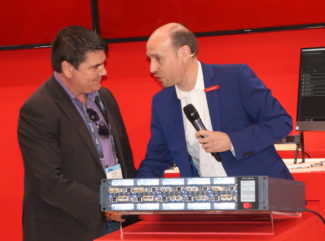 Toda la lógica de control y los enlaces de datos dentro de la estructura son redundantes, y la seguridad adicional la proporcionan dos fuentes de alimentación de carga compartida y un módulo de ventilador con unidades redundantes. La suma de estas medidas equivale a la red de seguridad de comunicaciones más completa disponible hasta la fecha en el mercado.
Toda la lógica de control y los enlaces de datos dentro de la estructura son redundantes, y la seguridad adicional la proporcionan dos fuentes de alimentación de carga compartida y un módulo de ventilador con unidades redundantes. La suma de estas medidas equivale a la red de seguridad de comunicaciones más completa disponible hasta la fecha en el mercado.
Otro de los diferenciales de Artist 1024 es que ya está operativo en algunos proyectos, como el que el broadcaster público canadiense CBC / Radio-Canada está llevando a cabo en su nuevo centro de producción en Montreal. On this occasion, se ha apostado por un sistema de intercom basado totalmente en IP con tecnología de Riedel (más detalles en el Especial NAB 2019 de Panorama Audiovisual).
Did you like this article?
Subscribe to our NEWSLETTER and you won't miss anything.



